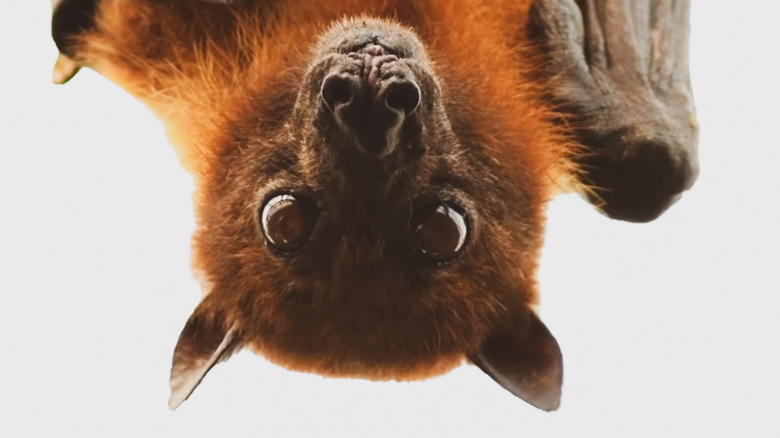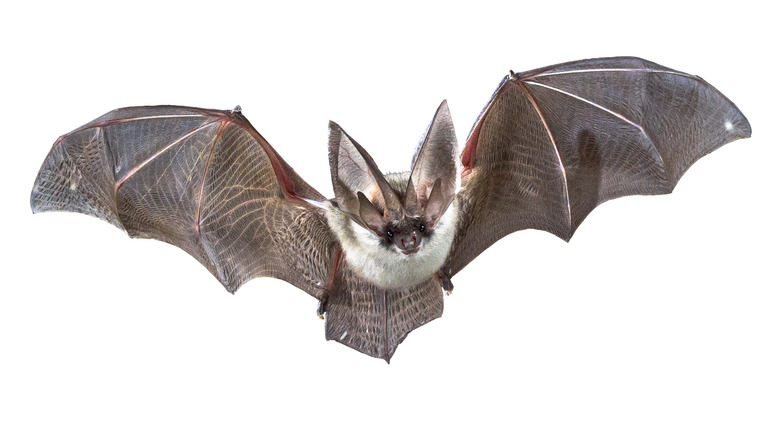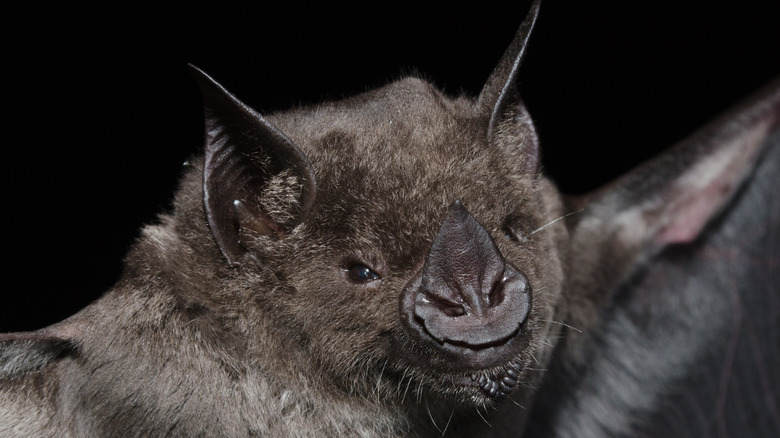What Is The Difference Between Rural Bats And Urban Bats?
Those out for a walk at twilight or in the evening hours have likely encountered the shadow of a bat as it flits overhead feeding on unseen insects. Bat species live almost everywhere in the U.S. and in many other parts of the world. They're also found in both rural and urban environments, according to the U.S. Fish & Wildlife Service. As further urban development encroaches on wild land, many bat populations have left the countryside, finding plentiful sources for food and a number of nice places to roost alongside us in the city.
That's true of many other city-friendly animal species like mice, rats, and raccoons. In recent years, even animals as large as mountain lions learned their lesson: Life among humans sometimes has its perks, based on Bloomberg reporting. As generations of bats live and breed among us, though, have changes occurred between city bats and their country cousins? A German team of scientists sought to find out, and their study, "Urban affinity and its associated traits: A global analysis of bats," is now published on Wiley Online Library.
Some bats species prefer city life over rural
What the team of scientists from a number of German scientific institutions found is that certain bats species are now more often found in the city than they are in the country (via Wiley Online Library). To reach their conclusions, scientists compared a worldwide database of bat species and cross-referenced it against how close to a urban area those bats tend to live. From there, the scientists compared traits in the bats that seemed to prefer living alongside people to those who stuck to country life.
Those aspects of the bat, among others, included body size, flexibility in roost selection, and echolocation frequency — the system through which bats find food and navigate using sound (via Phys.org). Examining a quarter of all known bat species worldwide, the German scientists looked for patterns to emerge, or whether bats of a certain size or shape or that echolocated differently seemed to prefer one environment over the other. Their results can now be applied to other species.
Smaller bats prefer city life
What the scientists learned in their study is that smaller bats with longer and lower frequency echolocation calls not only prefer to live in urban environments; they thrive. Urban bats are often more flexible in choosing their day roost as well. Based on the study, low and long echolocation is best suited for city spaces, and the ability to quickly move roost during daytime hours, based largely on size, is most advantageous, as human activity disturbs them.
These findings identify which bat species are less threatened by human development, as well as which may be more vulnerable and better suited for conservation efforts, both for bats and for other species, as Phys.org explains. According to Wildlife Removal USA, the largest-known urban bat colony resides in Austin, Texas, made up of roughly 1.5 million Mexican free-tails, a species native to the Americas. Bats are known disease carriers but they rarely attack humans, according to the United States Geological Survey (USGS).


